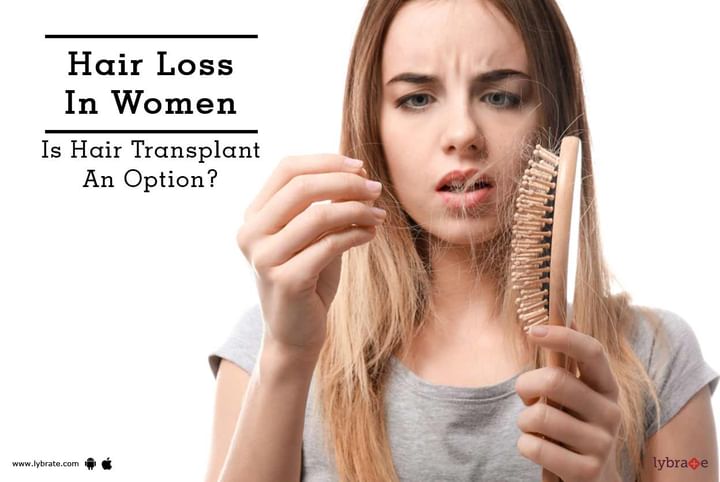Hair Loss In Women - Is Hair Transplant An Option?
Hair loss occurs in 20% of women under 30 years of age and almost 60% of women older than 70. Unlike in males, most of the time hair loss in women is secondary to some underlying conditions. In most of these conditions hair loss is reversible if proper identification of culprit and its treatment is done. While some hormonal changes during pregnancy and menopause can cause transient hair loss which may not require any specific treatment, others like thyroid dysfunction, polycystic ovarian disease (PCOD) require proper evaluation and treatment by endocrinologist.
Telogen Effluvium is also a period of transient hair loss seen after some major illness like dengue and malaria. Also physical and emotional stress, lifestyle changes and change in environment can also result in transient period of hair loss.
Nutritional deficiencies are very common in Indian women. Ferritin is a protein which reflects the amount of iron stores in our body. Ferritin deficiency is a very common cause of hair fall in females. Biotin is a vitamin that plays role in hair growth. Biotin deficiency is known to cause hair loss.
In Alopecia Areata, there is patchy hair loss because of destruction of hair roots by body’s own defense system. Excessive shampooing, coloring & styling may damage the hairs causing them to break and fall out. Female Pattern Baldness is a genetic condition which is seen in women after middle age. Unlike much commoner male pattern baldness, hairline doesn’t recede back. Initially there is thinning of part line and gradually diffuse hair loss radiates from part line to all over the top of head.
Treatment Of Hair Loss In Women:
- Eating a healthy, balanced diet. Focus on getting enough protein, iron, and other important nutrients.
- Avoid tight braids, buns, ponytails, and other hairstyles that may pull at your hair. Avoid excessive shampoo and frequent hair colors.
- Nutritional Supplements - Iron and biotin supplements are effective in treating hair loss when their deficiency is there.
- Treatment of underlying conditions - Evaluation and treatment of thyroid dysfunction, PCOD or any other underlying medical diseases can control hair loss.
- Minoxidil - Topical minoxidil spray in concentration of 2% or 5% is approved by FDA as a treatment for hair loss in females. It increases scalp blood supply and stimulates anagen (growth phase) of hair follicles. It is not a wonder drug and cannot restore the full density of hair. The effect is seen after 3 to 4 months of use and for proper result it has to be used for 9 to 12 months.
- Platelet Rich Plasma therapy (PRP) - PRP is obtained from patient’s own blood after processing it in an automated centrifuge. It is injected in the areas of hair loss. The various growth factors present in PRP stimulate hair growth and increase their thickness. Also by increasing blood supply in that area they create overall favorable atmosphere for hair growth.
- Hair Transplant - Hair transplant procedure involves taking healthy loss resistant hair from donor area of scalp and carefully transplanting them into balding areas. The donor area is usually at back and sides of head where hairs are naturally resistant to loss, especially in hereditary female pattern hair loss. These transplanted hairs continue to grow naturally. The hair transplant is sometimes the only solution in sever balding especially in female pattern hair loss.
Advantages of Hair Transplant:
- It is a simple procedure under local anesthesia.
- It gives natural look.
- Uses your own hairs so there is no chance of allergic reactions.
- Transplanted hairs grow naturally and you can cut, color and shampoo them normally.
It really restores your confidence and boosts your self esteem.



+1.svg)
